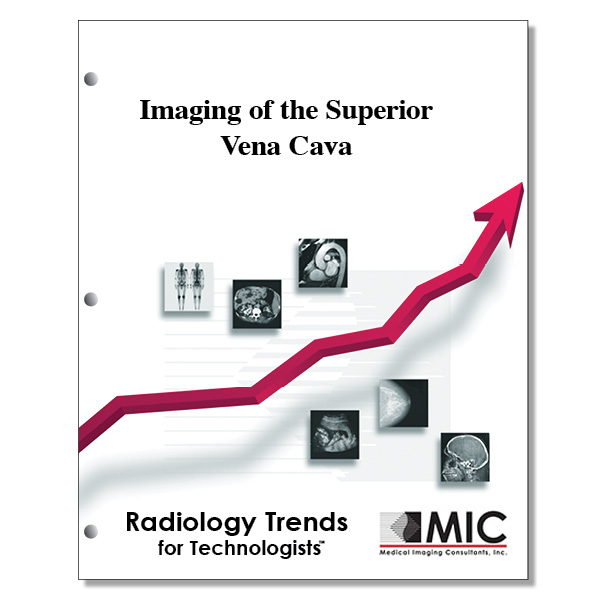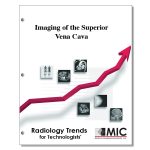

Imaging of the Superior Vena Cava
A presentation of the basic embryology and anatomy of the superior vena cava and the techniques used in imaging and interventions.
Course ID: Q00464 Category: Radiology Trends for Technologists Modalities: Cardiac Interventional, CT, MRI, Radiography, Sonography, Vascular Interventional2.5 |
Satisfaction Guarantee |
$29.00
- Targeted CE
- Outline
- Objectives
Targeted CE per ARRT’s Discipline, Category, and Subcategory classification:
[Note: Discipline-specific Targeted CE credits may be less than the total Category A credits approved for this course.]
Computed Tomography: 2.00
Procedures: 2.00
Neck and Chest: 2.00
Magnetic Resonance Imaging: 2.00
Procedures: 2.00
Body: 2.00
Registered Radiologist Assistant: 2.00
Procedures: 2.00
Abdominal Section: 2.00
Outline
- Introduction
- Embryology
- Anatomy
- Imaging Modalities
- Chest Radiography
- Computed Tomography
- Nonenhanced CT
- Contrast-enhanced CT
- MR Venography
- Conventional Venography
- Doppler US and Echocardiography
- Congenital Variants
- Persistent Left SVC
- Right Upper Lobe Partial Anomalous Pulmonary Venous Return
- SVC Aneurysm
- Acquired Abnormalities
- Stricture
- Fibrin Sheath
- Thrombus
- Primary Neoplasms
- SVC Lipoma or Extension of Lipomatous Hypertrophy of the Interarterial Speptum
- Primary SVC Sarcoma or Leiomyosarcoma
- Trauma
- SVC Interventional Procedures
- Fibrin Sheath Management
- Venous Angioplasty and Stent Placement
- SVC Filter Placement
- Conclusion
Objectives
Upon completion of this course, students will:
- state the function of the SVC
- describe embryologic development of the SVC
- know the veins that form the SVC
- explain where the SVC enters the heart
- describe the length of SVC
- indicate SVC abnormalities on chest radiography
- explain the location for CVCs within the SVC
- state the benefit of nonenhanced CT imaging in regard to the SVC
- explain how to reduce streak artifact on contrast-enhanced CT
- describe MR venography
- list the advantages of conventional venography
- list veins used for superior venacavography
- describe why direct visualization of the SVC at Doppler US is challenging
- state the most common congenital thoracic venous anomaly
- state the prevalence of persistent left SVC in the general population
- state the cause of persistent left SVC
- understand imaging indications to diagnose persistent left SVC
- explain difficulties in pacemaker placement with regard to persistent left SVC
- describe PAPVR
- describe why sinus venosus atrial septal defect is difficult to detect at transthoracic echocardiography
- list the causes of SVC aneurysm
- differentiate between saccular and fusiform SVC aneurysms
- differentiate between intrinsic and extrinsic factors for SVC strictures
- state the characteristics of SVC syndrome
- list the extrinsic causes of SVC strictures
- state the most common cause of SVC obstruction
- explain how fibrin sheath is confirmed
- state the most common complications of long-standing CVCs or implantable central venous devices
- list secondary complications of SVC thrombosis
- explain where thoracic leiomyosarcoms metastasize
- describe how the SVC is affected by trauma
- describe care given for iatrogenic rupture of the SVC during interventional procedures
- state the six-week patency rate for the internal snare maneuver
- state the mainstay treatment for benign SVC stenosis or occlusion
- state the percentage of cases where pulmonary embolism complicates upper extremity deep venous thrombosis
